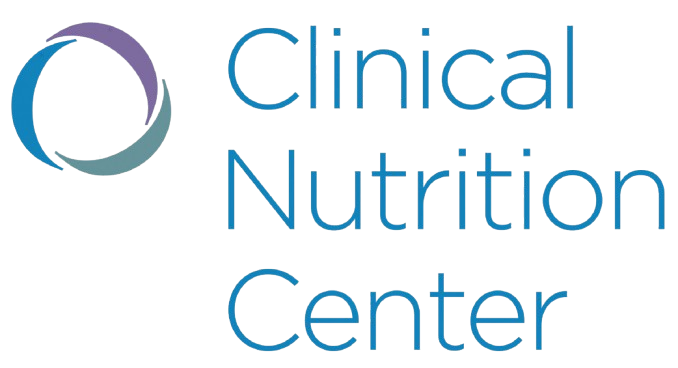Spring Weight Loss Tips
Spring 2010 Weight Loss Tips from the CNC Staff
HealthStyles
Spring, 2010
Are you ready for spring?
Here at CNC, we wanted to wish all our readers a happy and healthy spring season. I’ve asked our staff to get you some timely tips on weight management strategies you can start working on to get trim this spring.
If it’s been a while since you’ve been in to see us, remember you are welcome to pick up the phone and call us any time at 303-750-9454 and we can pick up right where we left off. There are never any membership fees or additional fees to start or stop with us – we are here for you if you need us! Remember that for most of us weight-management is a life-long endeavor, and many of our most successful patients are those that are able to pop in and out as they need us over the years. We are always happy to see you. With bathing suit season right around the corner, what better time to get back to work?
-Ethan Lazarus, MD
“Spring” into Positive Thinking
Now is the time to take positive steps by journaling to get rid of self-doubt thinking.
Try STOP:
S – Slow down, get more sleep
T – Take a breath
O – Observe objectively without attitude or emotion
P – Plan a different response. i.e. – in place of food think of a non-food response
Get rid of pessimistic beliefs. You could snap a rubber band on your wrist or write down your negative beliefs the moment they occur and write down a positive response.
Example:
Negative thought: “I had that cookie… I am a failure…”
Positive thought: “Yes I had that cookie but in the past I had 2 or 3 and I only had one – Yea for me! I’m developing more willpower. I’m not a failure.”
Capitalize on the positives! Make a list of fun non-food ideas to distract yourself from food. Never say negative things about yourself!
-Mary Ellen Doukakis, RD
Springtime Diet Traps – and tips to avoid them!
1) Kids’ sports activities
– Bring your own snacks and water avoiding concessions and fast foods with kids
– Don’t sit on the “bench.” Walk the field-at least during practice time. A pedometer will help.
2) Weekend parties, graduations, and weddings
– Plan your whole day. Exercise early. Get in your dairy or protein drink or protein and vegetables so as not to go to the event hungry.
– Take time to dress and get ready, making an effort to feel confident and good about yourself so you talk more and eat less.
3) Fix a healthy plate and stand or sit away from the tempting foods
4) Make a rule of a glass of water before each and every beverage.
-Suzanne Boos, RD
Spring Weight Management Tips
Are your clothes a little tight? Purchase some active-wear that you feel comfortable working out in. You want to feel great when you’re exercising! Then buy a nice business or party outfit that you’ll love to wear in a size or two smaller than you are now. Put it out where you can see it for motivation!
Plant a garden this year! Gardeners have better bones than women who do aerobics, walk or run for exercise. Don’t have room? Fill your porch with potted herbs and veggies! Hauling dirt and supplies is great exercise. Think about doing more of your own yard work.
Set a hiking goal this year! Think about getting into the foothills, or even tackling a 14er this summer! Go to: trailsdenver.com and look up local trails. Try 14ers.com if you want to climb a big one.
Tracy L. Boykin, RD
Game On This Spring!
As a competitive person, I’ve often found it helpful to turn difficult situations in to a game. Then, instead of feeling deprived, I can feel like I won the game!
Let me give you an example: my 3 year old Zoey and I get to do a date night about once a month. Unfortunately for me, her favorite restaurant in the world is a well-known hamburger joint, home of the 1000 calorie hamburger, bottomless french-fries and bottomless drinks, hardly the best establishment for a Physician dedicating his career to health and wellness through weight management. I’ll tell you – their marketing department really got it right by giving the kids a balloon J
In any event, the game for me is to try to emerge from the restaurant having kept things under control. I define that as having a reasonable sandwich, side salad, no drinks and no fries. Well, it was just my luck, but when they brought us our food, they brought out the big thing of French fries and stuck them right between my daughter and I. What was I to do?
Normally, I’d ask for them to be removed. But instead, game time! I thought I’d leave them – see if I could have the willpower to not eat even one. As dinner went on, I found that I didn’t even crave them. For many years now, I’ve likened French fries to strychnine – French fries just take longer to inflict harm. In any event, I wasn’t going to break my streak, but then something even more interesting happened. Zoey, who if presented with French fries will eat nothing else – ate her dinner. Because I wasn’t reaching for the fries, she didn’t ask for them either. They just sat on the table like a decoration.
We survived our dinner. I kept to my plan. She got her balloon. We all won. And I could feel good about myself for sticking with a plan in a less than ideal situation.
This spring, think about the challenges you might face, how to turn them in to a game you can win. Then win the game, feel good about yourself, and feel successful!
-Ethan Lazarus, MD
Good Calories, Bad Calories
The American Dietetic Association’s annual meeting was in Denver this past October. The conference showcased several authors and researchers who discussed controversial topics. This made for very interesting sessions! One well known author named Gary Taubes talked with us about his findings. He has spent seven years exploring the history and research on high or low fat vs. high or low carbohydrate diets used in Europe and the US since the 1820s. He said that there were/are three competing paradigms:
1. From 1820 to 1973, carbohydrates were thought to be the only cause of obesity.
2. From 1950 to the present, fat and saturated fat have been linked to heart disease and obesity, and the low fat diet has been used to treat heart disease, cancer, diabetes and obesity. These recommendations, according to the author, are not based on conclusive science.
3. Since the early 90s, carbohydrates have been associated with metabolic syndrome and hyper-triglyceridemia. Carbohydrate, therefore, is the bad guy!
Mr. Taubes’ retelling of the research was fascinating and thought provoking! While I don’t advocate running right out to purchase a pound of bacon, I do agree that in the 70s and early 80s, nutrition advice focused on driving fat intake as low as 10% of total calories. Sugar was thought to be blameless, unless, of course, one had diabetes. We had no idea how damaging trans fats would turn out to be, and actually marketed these margarines as significantly healthier than butter. The concept of “good fats,” (which help to raise HDL cholesterol) had not yet come into existence. Did the nutrition profession’s advice of the time contribute to our overeating of sugars and refined carbs, and ultimately help to balloon our population into the high occurrence of obesity we now see in this country? Probably. It was one of numerous factors which led us to eat more foods with higher sugars and lower nutrient density. We did not, however, cut our fat calories! We just added more carbs to them!
What did I take from this discussion?
1. I don’t believe that we should cut all carbohydrates out of our lives. So very many of our nutrients are found in foods that contain carbs. Endurance and other athletes definitely benefit from carbohydrate in their diets.
2. I think that the focus should be on a more plant based diet – lots and lots of fruits and vegetables, lean proteins (except do eat fatty fish, which provide omega 3 fatty acids), whether animal or vegetable sourced, starchy vegetables, beans, peas and lentils, whole grains.
3. In general, refined starches have only a very small place in our diets. These dismembered grains provide no fiber, trace minerals or phytonutrients, and raise blood sugar quickly, contributing to insulin production and its resulting sugar roller coaster. Sugars do the same: honey, maple syrup, fructose, white, brown and raw sugars need to be limited in our daily diets. Even blue agave nectar raises blood sugar.
4. What about nuts? They are a fabulous source of good fats and should be a part of the daily diet. The key is to incorporate them in meals: on a salad, on whole grain cereal, in whole grain bread.
5. Olive oil, canola, soybean, corn, sunflower and safflower oils do have a place in a healthy diet. A teaspoon or two in the frying pan when sautéing vegetables adds flavor and the benefits of omega 3, 6 and 9 to our diets.
The resulting diet is high in fibers, phytonutrients (plants’ anti-cancer chemicals),vitamins and minerals. It’s also low in saturated fats and very low in trans-fats, yet provides ample protein without excessive calories.
What about as yet emerging nutrition science? Hang on – the ride will likely continue to be wild!
Your CNC registered dietitian will be your best source of information. Bring all of your nutrition questions!
Tracy L. Boykin, RD




